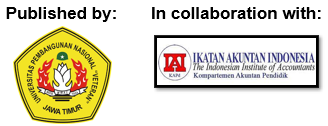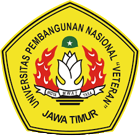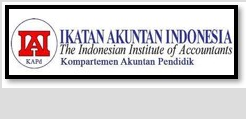Harmony of Bank Structure Ownership through Tri Hita Karana Cultural Concept
DOI:
https://doi.org/10.33005/jasf.v6i2.469Keywords:
Banking harmonization, bank ownership structure, Tri Hita KaranaAbstract
Tri Hita Karana is a philosophy of balance originating from Bali. From a banking perspective, Parahyangan can be interpreted as ethical and responsible governance. Pawongan reflects the balance of interests between various interested parties, from shareholders to management, employees, and customers. Palemahan is the bank's commitment to supporting sustainable and environmentally friendly economic development. This study aims to explore the harmonization of bank ownership through the cultural principles of Tri Hita Karana. The method in this article is a descriptive qualitative approach with a literature review that explores local wisdom theory specifically. Implementing Tri Hita Karana principles can create a more harmonious, transparent, and sustainable bank ownership structure. This can be achieved through strong governance policies, balanced ownership distribution, and commitment to social and environmental responsibility. Harmonizing the bank ownership structure through Tri Hita Karana can improve bank performance, strengthen public trust, and comprehensively contribute to the financial system's stability. Through the Tri Hita Karana Concept, the Bank Ownership Structure is a financial matter and a vehicle to realize harmonization between religious values and spirituality, common welfare, and environmental sustainability. The harmony model of the Tri Hita Karana-based bank ownership structure illustrates that by integrating Tri Hita Karana, Corporate Social Responsibility, and Triple Bottom Line, organizations can balance spiritual, social, environmental, and economic aspects and ensure long-term sustainability.
Downloads
References
Achmad, N. N. (2024). Pengaruh Keterlibatan Pendiri dan Kepemilikan Asing terhadap Kinerja Keuangan Perusahaan Keluarga. Thesis (Undergraduate), Universitas Hayam Wuruk Perbanas. http://eprints.perbanas.ac.id/12130/
Adhitama, S. (2020). Konsep tri hita karana dalam ajaran kepercayaan budi daya. Dharmasmrti, 20(2), 29–45. https://doi.org/10.32795/ds.v20i2.1020
Al-Faryan, M. A. S. (2024). Agency theory, corporate governance and corruption: an integrative literature review approach. Cogent Social Sciences, 10(1). https://doi.org/10.1080/23311886.2024.2337893.
Anafiah, V. A. A., Diyanty, V. & Wardhani, R. (2017). The effect of controlling shareholders and corporate governance on audit quality, Jurnal Akuntansi dan Keuangan Indonesia: Vol. 14: Iss. 1, Article 1. https://doi.org/10.21002/jaki.2017.01.
Anderson, R. C., & Reeb, D. M. (2003). Founding‐family ownership and firm performance: evidence from the S&P 500. The Journal of Finance, 58(3), 1301–1328. https://doi.org/10.1111/1540-6261.00567
Anggreni, M. K. D., & Robiyanto, R. (2021). Pengaruh Struktur Modal dan Struktur Kepemilikan terhadap Kinerja Perusahaan dengan Corporate Governance sebagai Variabel Moderasi. Jurnal Ekonomi Bisnis dan Kewirausahaan, 10(2), 100. https://core.ac.uk/download/pdf/478844982.pdf
Anggriyanti, D. I., & Hwihanus, H. (2024). Analisis Fundamental Makro, Karakteristik Perusahaan, terhadap Nilai Perusahaan dengan Struktur Kepemilikan, Manajemen Laba, Kinerja Keuangan sebagai Variabel Intervening pada Perusahaan Manufaktur Tahun 2019-2023. Akuntansi, 3(2), 168–178. https://doi.org/10.55606/akuntansi.v3i2.1998
Astawa, I. P., Sukawati, T. G. R., & Sugiartha, I. N. G. (2019). Developing a harmonious culture-based sustainable event model in Bali Tourism Village. Geo Journal of Tourism and Geosites, 25(2), 446–462. http://dx.doi.org/10.30892/gtg.25214-372.
Astuti, R. (2021). Pengaruh Kepemilikan Manajerial dan Kepemilikan Institusional terhadap Kinerja Keuangan Perusahaan (Studi Kasus pada Perusahaan Manufaktur Sub Sektor Food & Beverage yang Terdaftar di Bursa Efek Indonesia Periode Tahun 2017-2019). Thesis (undergraduate), Sekolah Tinggi Ilmu Ekonomi Indonesia. http://repository.stei.ac.id/5614/.
Azwari, P. C. (2016). Masalah keagenan pada struktur kepemilikan perusahaan keluarga di Indonesia. Akuntabilitas, 9(2), 173–184. https://journal.uinjkt.ac.id/index.php/akuntabilitas/article/view/4021.
Berle and Means. (1932). The Modern Corporation and Private Property. In The Modern Corporation and Private Property.
Budiadnya, I. P. (2018). Tri Hita Karana dan Tat Twam Asi sebagai Konsep Keharmonisan dan Kerukunan. Widya Aksara: Jurnal Agama Hindu, 23(2). https://doi.org/10.54714/widyaaksara.v23i2.38.
Budihardjo, E. (1986). Architectural conservation in Bali. (No Title).
Cantrell, B. W., & Yust, C. G. (2018). The relation between religiosity and private bank outcomes. Journal of Banking & Finance, 91, 86–105. https://doi.org/10.1016/j.jbankfin.2018.04.009.
Claessens, S., Demirgüç-Kunt, A., & Huizinga, H. (2001). How does foreign entry affect domestic banking markets? Journal of Banking & Finance, 25(5), 891–911. https://doi.org/10.1016/S0378-4266(00)00102-3.
Dinçkol, D., Ozcan, P., & Zachariadis, M. (2023). Regulatory standards and consequences for industry architecture: The case of UK Open Banking. Research Policy, 52(6), 104760. https://doi.org/10.1016/j.respol.2023.104760.
Dwijendra, N. K. A., & Ketut, N. (2003). Perumahan dan permukiman tradisional Bali. Jurnal Permukiman “Natah,” 1(1), 8–24. https://ojs.unud.ac.id/index.php/natah/article/view/2926.
Fadli, Z., Fadilah, N., & Kholis, A. (2020). Pengaruh Kinerja Keuangan, Struktur Kepemilikan, dan Nilai Perusahaan terhadap Kompensasi Eksekutif pada Perusahaan Perbankan. Jurnal Riset Akuntansi dan Bisnis, 20(1), 106–118. https://doi.org/10.30596/jrab.v20i1.5056.
Gillan, S. L., & Starks, L. T. (2000). Corporate governance proposals and shareholder activism: The role of institutional investors. Journal of Financial Economics, 57(2), 275–305. https://doi.org/10.1016/S0304-405X(00)00058-1
Gultom, M. M., Dewi, F. G., & Dharma, F. (2023). Dampak Tata Kelola Perusahaan dan Dewan Direksi Perempuan terhadap Keberlangsungan Perusahaan: Sebuah Artikel Review. Jurnal Akuntansi dan Audit Tri Bhakti, 2(2), 173–188. https://ejurnal.stietribhakti.ac.id/index.php/JAATB/article/view/265.
Gunawan, K. (2011). Peran Falsafah Tri Hita Karana bagi Pertumbuhan dan Kinerja Lembaga Perkreditan Desa (LPD) di Bali. Jurnal Analisis Manajemen, 5(2), 23–36. https://jurnal.umk.ac.id/index.php/JAM/article/view/5.
Handogo, H. S. & Pangestuti, I. R. D. (2023). Indonesia's green, red economic sectors and banking credit rates. Sibatik Jurnal: Jurnal Ilmiah Sosial, Ekonomi, Budaya, Teknologi, dan Pendidikan, 2(10), 3019-3032. https://publish.ojs-indonesia.com/index.php/SIBATIK/article/view/1372.
Harymawan, I., & Nismara, K. (2022). Board Gender Diversity and Corporate Innovation: Evidence from Indonesian Family Firms. Journal of Accounting and Strategic Finance, 5(1), 22–39. https://doi.org/10.33005/jasf.v5i1.224.
Hussain, M., Abid, F., Ambreen, S., Usman, A., & Rahman, A. ur. (2022). The role of institutional ownership structures on corporate performance. Journal of Public Affairs, 22(1), 1–8. https://doi.org/10.1002/pa.2296.
Hutasoit, H., & Wau, R. (2017). Menuju Sustainability dengan Tri Hita Karana (Sebuah Studi Interpretif pada Masyarakat Bali). Business Management Journal, 13(2). https://dx.doi.org/10.30813/bmj.v13i2.917.
IMF. (2022). World Economic Outlook-Rising Caseloads, A Disrupted Recovery, and Higher Inflation. IMF Working Papers, 20(242), 1–157. https://www.imf.org/en/Publications/WEO/Issues/2022/01/25/world-economic-outlook-update-january-2022.
Jensen, M. C., & Meckling, W. H. (1976). Theory of the Firm: Managerial Behavior, Agency Costs and Ownership Structure. Journal of Financial Economics, 4, 305–360. http://ssrn.com/abstract=94043Electroniccopyavailableat:http://ssrn.com/abstract=94043http://hupress.harvard.edu/catalog/JENTHF.html
Karpika, I. P., & Mentari, R. M. (2020). Penerapan layanan bimbingan klasikal berbasis tri hita karana dalam meningkatkan karakter siswa tahun pelajaran 2019/2020. Indonesian Journal of Educational Development (IJED), 1(3), 464–470. https://doi.org/10.5281/zenodo.4286693.
Khaer, M., & Anwar, S. (2022). Encouraging Sustainability and Innovation: Green Banking Practices Growing in Indonesia. EKSYAR : Jurnal Ekonomi Syari’ah & Bisnis Islam, 9(2), 173–182. https://doi.org/10.54956/eksyar.v9i2.422.
Kustina, K. T., & Arisanti, L. P. M. (2022). Pengaruh Pengimplementasian Konsep Corporate Social Responsibility Berlandaskan Tri Hita Karana terhadap Kinerja Keuangan dan Kesejahteraan Masyarakat Desa Adat. Juara: Jurnal Riset Akuntansi, 12(2), 190–215. https://doi.org/10.36733/juara.v12i2.3516.
Kusuma, I. G. A. T., Landra, N., & Widnyana, I. W. (2019). Construction of welfare mediation model based on Tri Hita Karana on the economic effect of tourism sector toward happiness to improve life satisfaction of local community. Asia-Pacific Management and Business Application, 8(1), 45–72. https://doi.org/10.21776/ub.apmba.2019.008.01.5.
La Porta, R., Lopez‐de‐Silanes, F., & Shleifer, A. (1999). Corporate ownership around the world. The Journal of Finance, 54(2), 471–517. https://doi.org/10.1111/0022-1082.00115.
La Viola, C., & Mayangsari, S. (2022). Pengaruh Kepemilikan Mayoritas, Profitabilitas, Ukuran Perusahaan, dan Umur Perusahaan terhadap Pengungkapan Corporate Social Responsibility (Perusahaan yang memenangkan Corporate Social Responsibility Awards (ICSRA) 2021. Jurnal Ekonomi Trisakti, 2(2), 763–776. https://doi.org/10.25105/jet.v2i2.14500.
Laeven, L., & Levine, R. (2009). Bank governance, regulation and risk-taking. Journal of Financial Economics, 93(2), 259–275. https://doi.org/10.1016/j.jfineco.2008.09.003.
Lubis, I. T., Syahputra, O., Lubis, M. R. T., Ramadhani, S., & Pohan, A. R. (2022). Accountability and Transparency of Financial Management of Village Funds in Improving the Independence of Village Communities in the Endemy of Covid-19. Journal of Economics, Finance and Management Studies, 05(08), 2129–2136. https://doi.org/10.47191/jefms/v5-i8-04.
Mahyuni, L. P., & Dewi, I. (2020). Corporate Social Responsibility, Kearifan Lokal ‘Tri Hita Karana’ dan Pariwisata Berbasis Masyarakat Berkelanjutan. Jurnal Ilmiah Ekonomi dan Bisnis, 17(2), 99–105. https://doi.org/10.31849/jieb.v17i2.3697.
Mayoni, K., Widhiyaningsih, I. H., Dharnendri, L. Y., Semaranatha, I. K., & Wiryasanjaya, M. T. (2023). Implementasi Ajaran Tri Hita Karana dalam Pembangunan Masyarakat Bali. Gudang Jurnal Multidisiplin Ilmu, 1(5), 90–95. https://gudangjurnal.com/index.php/gjmi/article/view/865.
Megginson, W. L., & Netter, J. M. (2001). From state to market: A survey of empirical studies on privatization. Journal of Economic Literature, 39(2), 321–389. https://www.aeaweb.org/articles?id=10.1257/jel.39.2.321.
Mentari, B., & Idayati, F. (2021). Pengaruh kepemilikan manajerial, profitabilitas, dan kebijakan hutang terhadap nilai perusahaan. Jurnal Ilmu dan Riset Akuntansi (JIRA), 10(2), 1-10. https://jurnalmahasiswa.stiesia.ac.id/index.php/jira/article/view/3793.
Mustafa, M., Nurjaya, M., & Fachmi, M. (2022). Causality of Credit Distribution in Indonesian Banking. Atestasi: Jurnal Ilmiah Akuntansi, 5(1), 212–224. https://doi.org/10.57178/atestasi.v5i1.192
Nuraina, E. (2010). Pengaruh kepemilikan institusional dan ukuran perusahaan terhadap kebijakan hutang dan nilai perusahaan (Studi Pada Perusahaan Manufaktur yang Tercatat di BEI). Thesis (undergraduate), UNS (Sebelas Maret University). https://digilib.uns.ac.id/dokumen/detail/11269.
Nurita, W., & Putri, I. (2021). The Implementation of “Tri Hita Karana” Ideology in Preventing the Spread of Covid-19 in Bali. Celt: A Journal of Culture, English Language Teaching & Literature, 21(1). https://doi.org/10.24167/celt.v21i2.3235.
Padet, I. W., & Krishna, I. B. W. (2020). Falsafah hidup dalam konsep kosmologi Tri Hita Karana. Genta Hredaya: Media Informasi Ilmiah Jurusan Brahma Widya STAHN Mpu Kuturan Singaraja, 2(2). https://jurnal.stahnmpukuturan.ac.id/index.php/genta/article/view/455.
Peters, J. H. (2013). Tri Hita Karana. Kepustakaan Populer Gramedia.
Purnamasari, D., Mohd. Ali, H., & Mahpop, A. (2022). The National Interests and Sustainability of State-Owned Banks in Indonesia. Malaysian Journal of Social Sciences and Humanities (MJSSH), 7(11), e001988. https://doi.org/10.47405/mjssh.v7i11.1988.
Putra, I. D. G. A. D., Lozanovska, M., & Fuller, R. (2019). From spiritualistic toward more pragmatic pattern: re-ordering Balinese houses and viability of the household traditions in tourism economy. Journal of Architecture and Urbanism, 43(1), 47–61. https://doi.org/10.3846/jau.2019.3692.
Remawa, A. A., & Rai, G. (2015). Konsep Estetika dan Ruang pada Gubahan Bangunan Hunian Bali Madya. Disertasi S3. FSRD. ITB. Bandung.
Santoso, D. B., & Hartanto, A. D. (2020). Membangun Sistem Keuangan Inklusif. Universitas Brawijaya Press.
Septiawan, H. (2016). Pengaruh Mekanisme Corporate Governance dan Struktur Kepemilikan Terhadap Kinerja Perbankan. Thesis (undergraduate), Universitas Negeri Jakarta. http://repository.unj.ac.id/2042/.
Shan, Y. G., Tang, Q., & Zhang, J. (2021). The impact of managerial ownership on carbon transparency: Australian evidence. Journal of Cleaner Production, 317, 128480. https://doi.org/10.1016/j.jclepro.2021.128480.
Siddika, A., & Haron, R. (2020). Capital regulation and ownership structure on bank risk. Journal of Financial Regulation and Compliance, 28(1), 39–56. https://doi.org/10.1108/JFRC-02-2019-0015.
Sucahyati, D., Harymawan, I., & Roiston, T. A. (2020). Family Involvement with MD & A (Management Disclosure & Analysis) Readability Level. Jurnal Akuntansi, 24(1), 62. https://doi.org/10.24912/ja.v24i1.642.
Suryaningrum, D. H. & Safrudin, J. D. (2020). Determining Factors of Thin Capitalization Practices in Indonesia. Proceeding Book of the 2nd International Conference on Business and Banking Innovations (ICOBBI) 2020, Available at SSRN: https://ssrn.com/abstract=3772027
Taufan, A. (2023). Kearifan Lokal (Local Wisdom) Indonesia. In Jurnal Ilmu Pendidikan (Vol. 7, Issue 2). https://repository.penerbitwidina.com/publications/564974/kearifan-lokal-local-wisdom-indonesia.
Windia, I. W., & Wiguna, W. A. A. (2013). Subak warisan budaya dunia. Udayana University Press.
Yasa, N., Ekawati, N., Rahmayanti, P., & Tirtayani, I. (2024). The role of Tri Hita Karana-based business strategy and digital marketing to improve sustainable business performance. International Journal of Data and Network Science, 8(1), 629–640. http://dx.doi.org/10.5267/j.ijdns.2023.8.022.
Yasin, M., & Nursadi, H. (2021). Miracle 14: Transparency in Indonesia’s State-Owned Enterprises. Bisnis & Birokrasi: Jurnal Ilmu Administrasi Dan Organisasi, 28(3). https://doi.org/10.20476/jbb.v28i3.1303.
Zhu, Y., Zhang, H., Siddik, A. B., Zheng, Y., & Sobhani, F. A. (2023). Understanding Corporate Green Competitive Advantage through Green Technology Adoption and Green Dynamic Capabilities: Does Green Product Innovation Matter? Systems, 11(9), 461 (1-21). https://doi.org/10.3390/systems11090461.














